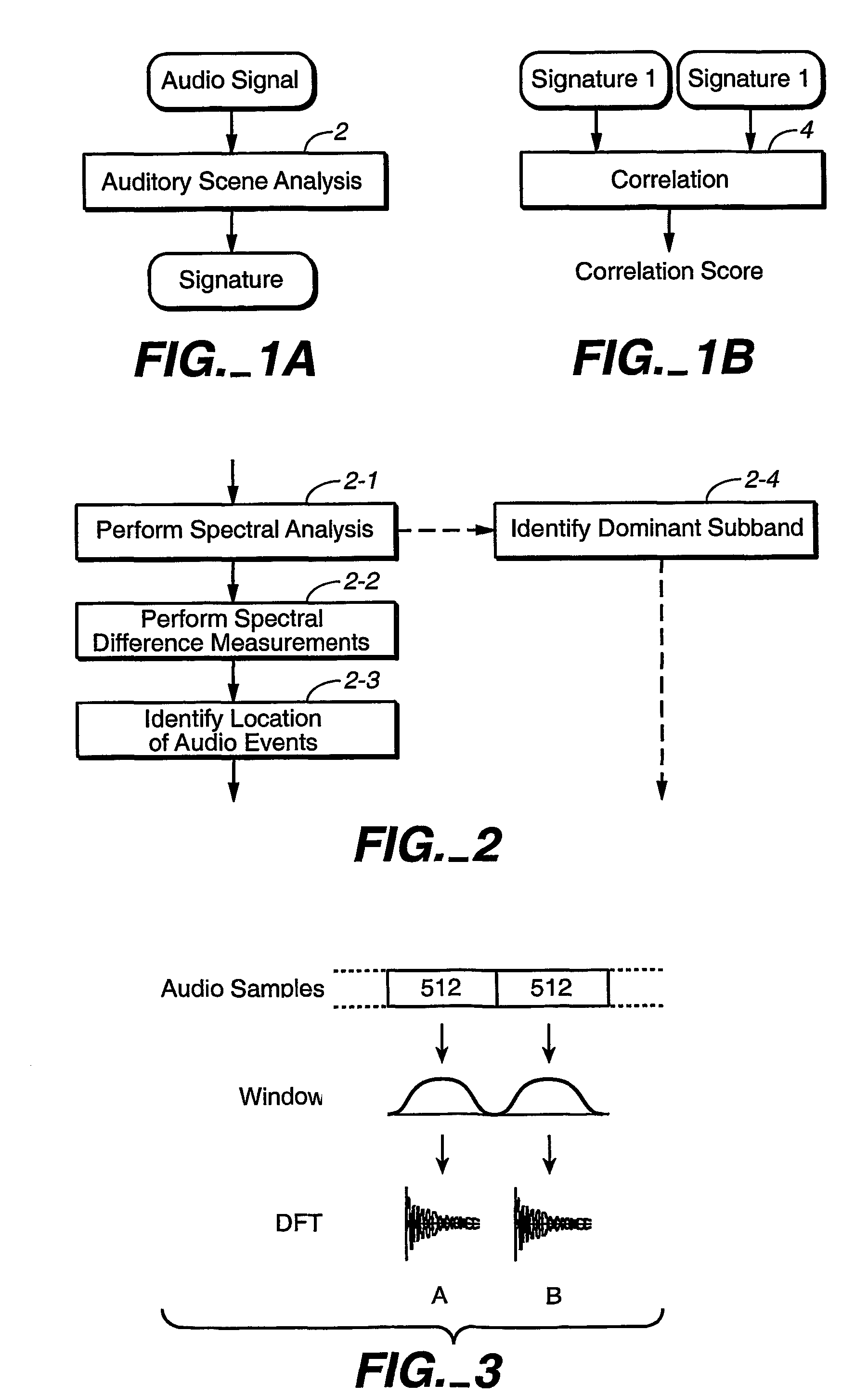Comparing audio using characterizations based on auditory events
a technology of auditory events and audio signals, applied in the field of audio signals, can solve the problems of specialized and computationally demanding techniques involving auditory scene analysis, and cannot be considered practical techniques for sound separation, and achieve the effect of eliminating or reducing the effect of amplitude changes, simple and computationally efficien
- Summary
- Abstract
- Description
- Claims
- Application Information
AI Technical Summary
Benefits of technology
Problems solved by technology
Method used
Image
Examples
Embodiment Construction
[0038]In a practical embodiment of the invention, the audio signal is represented by samples that are processed in blocks of 512 samples, which corresponds to about 11.6 msec of input audio at a sampling rate of 44.1 kHz. A block length having a time less than the duration of the shortest perceivable auditory event (about 20 msec) is desirable. It will be understood that the aspects of the invention are not limited to such a practical embodiment. The principles of the invention do not require arranging the audio into sample blocks prior to determining auditory events, nor, if they are, of providing blocks of constant length. However, to minimize complexity, a fixed block length of 512 samples (or some other power of two number of samples) is useful for three primary reasons. First, it provides low enough latency to be acceptable for real-time processing applications. Second, it is a power-of-two number of samples, which is useful for fast Fourier transform (FFT) analysis. Third, it ...
PUM
 Login to View More
Login to View More Abstract
Description
Claims
Application Information
 Login to View More
Login to View More - R&D
- Intellectual Property
- Life Sciences
- Materials
- Tech Scout
- Unparalleled Data Quality
- Higher Quality Content
- 60% Fewer Hallucinations
Browse by: Latest US Patents, China's latest patents, Technical Efficacy Thesaurus, Application Domain, Technology Topic, Popular Technical Reports.
© 2025 PatSnap. All rights reserved.Legal|Privacy policy|Modern Slavery Act Transparency Statement|Sitemap|About US| Contact US: help@patsnap.com



